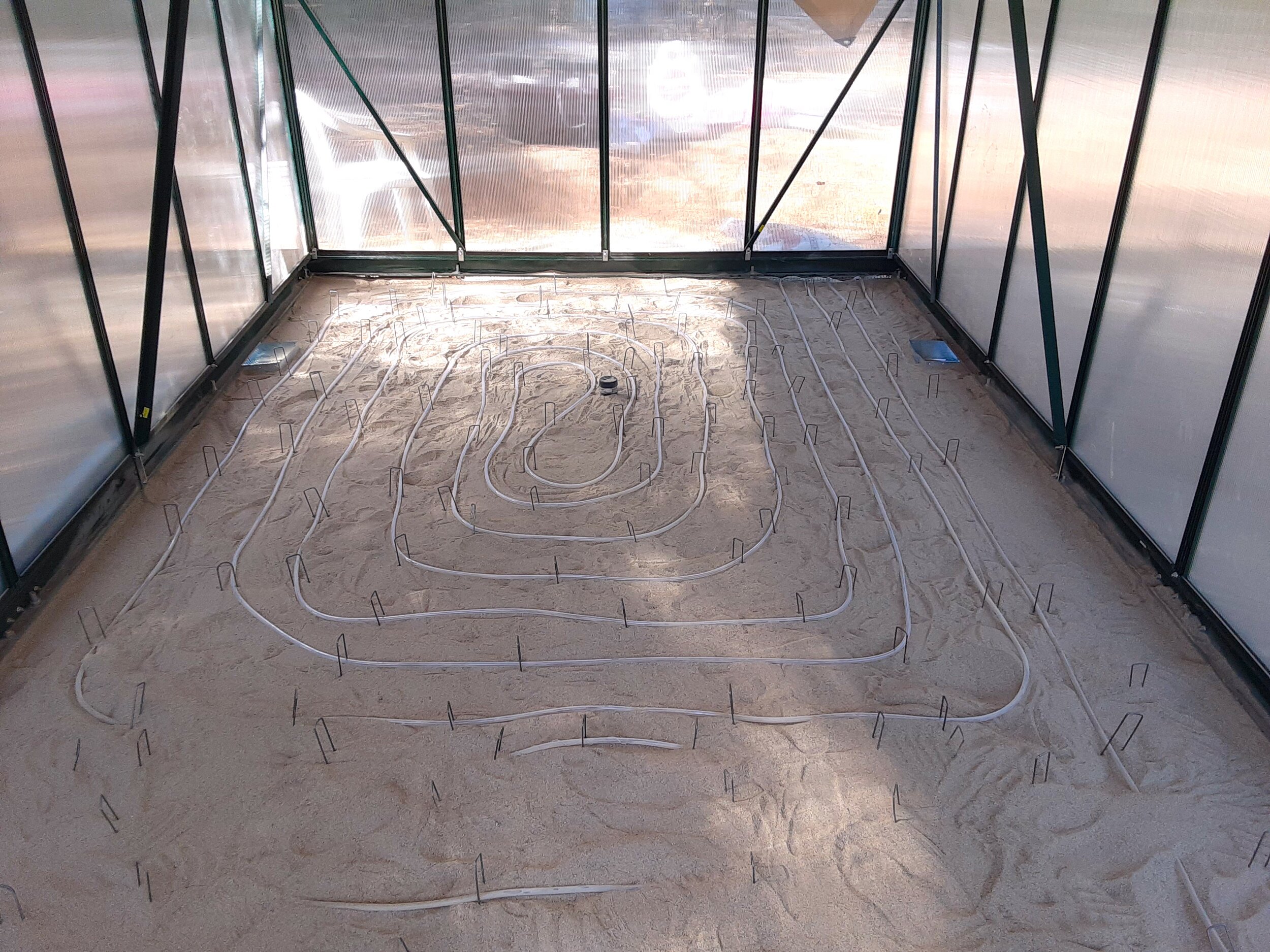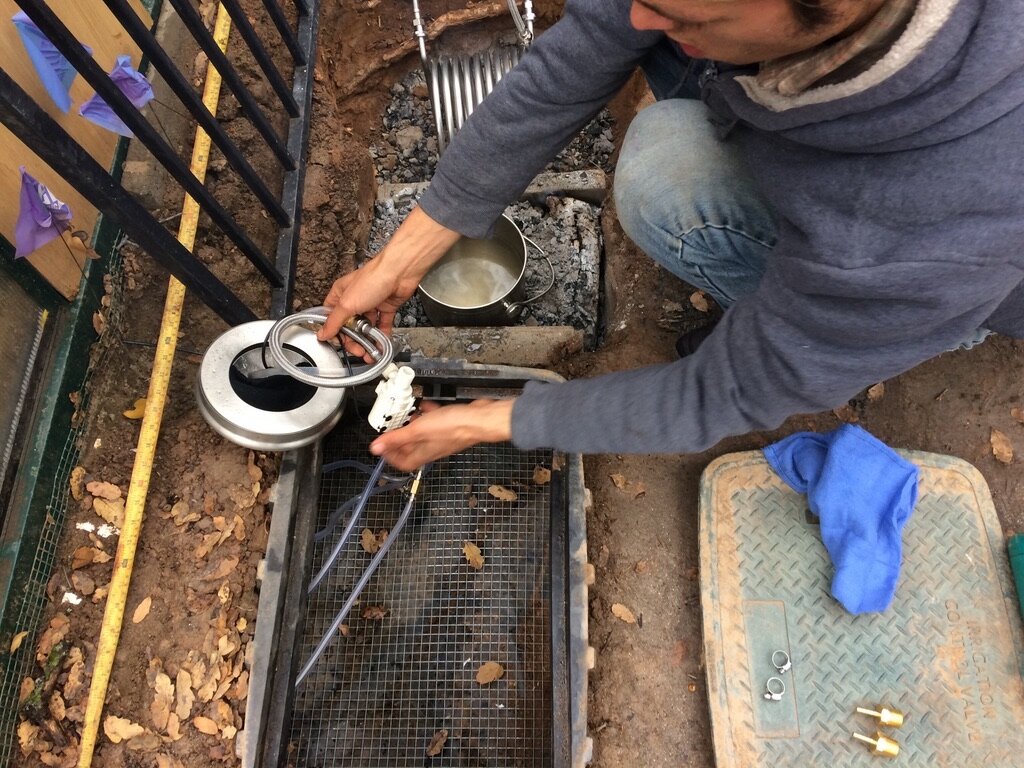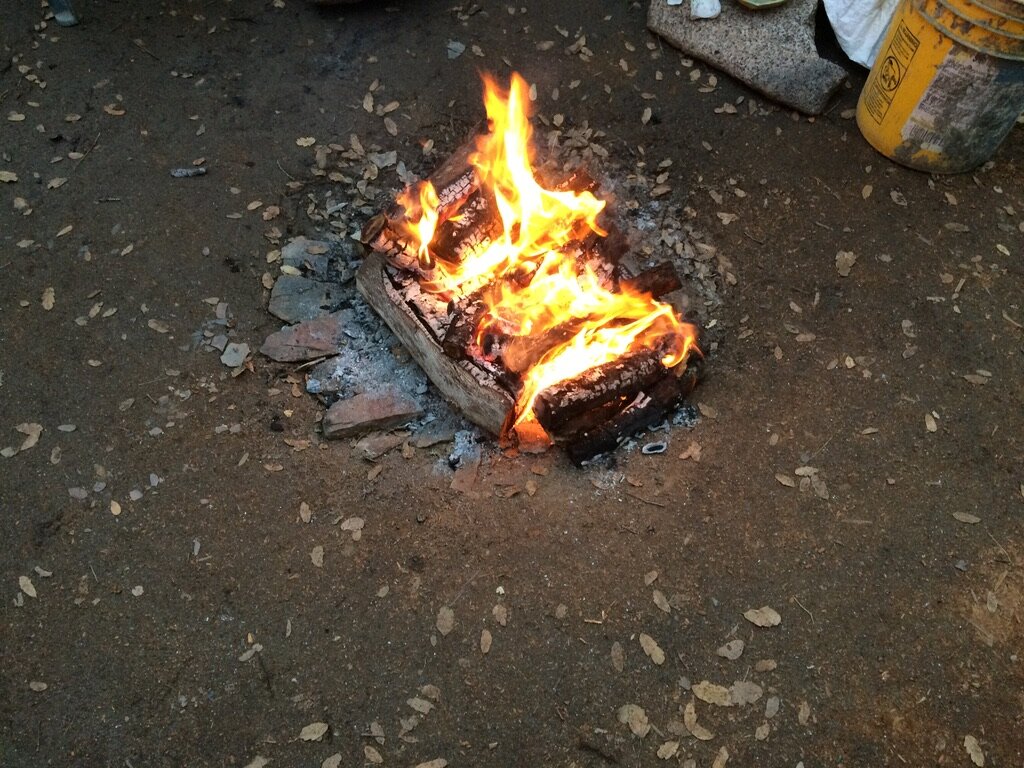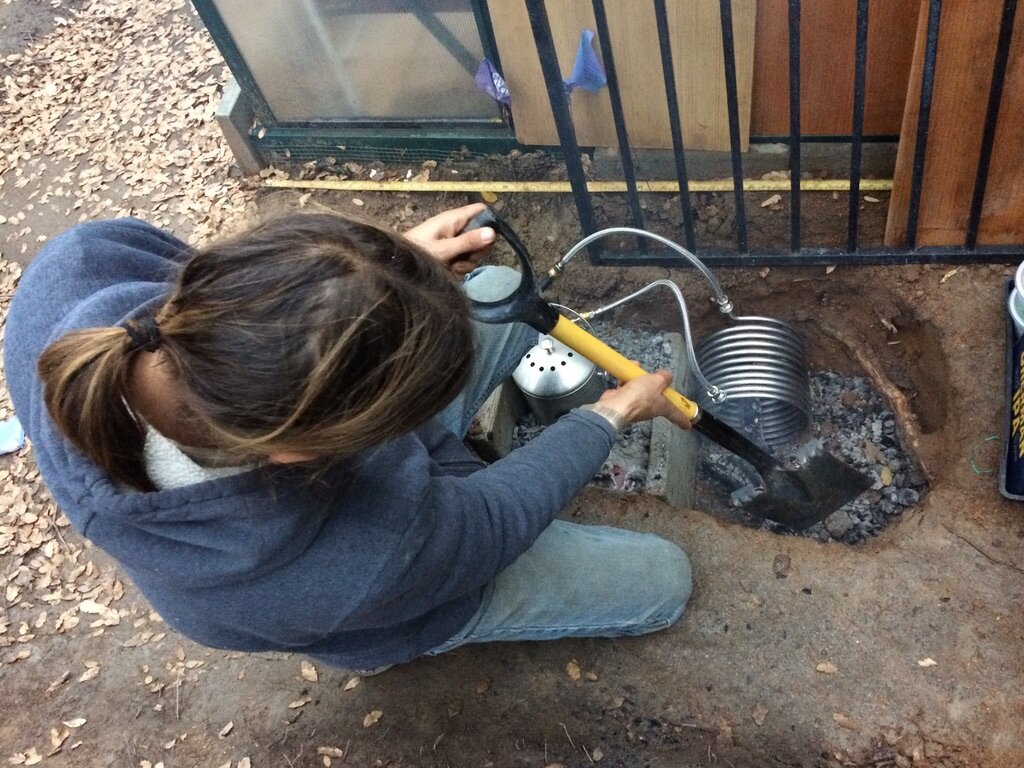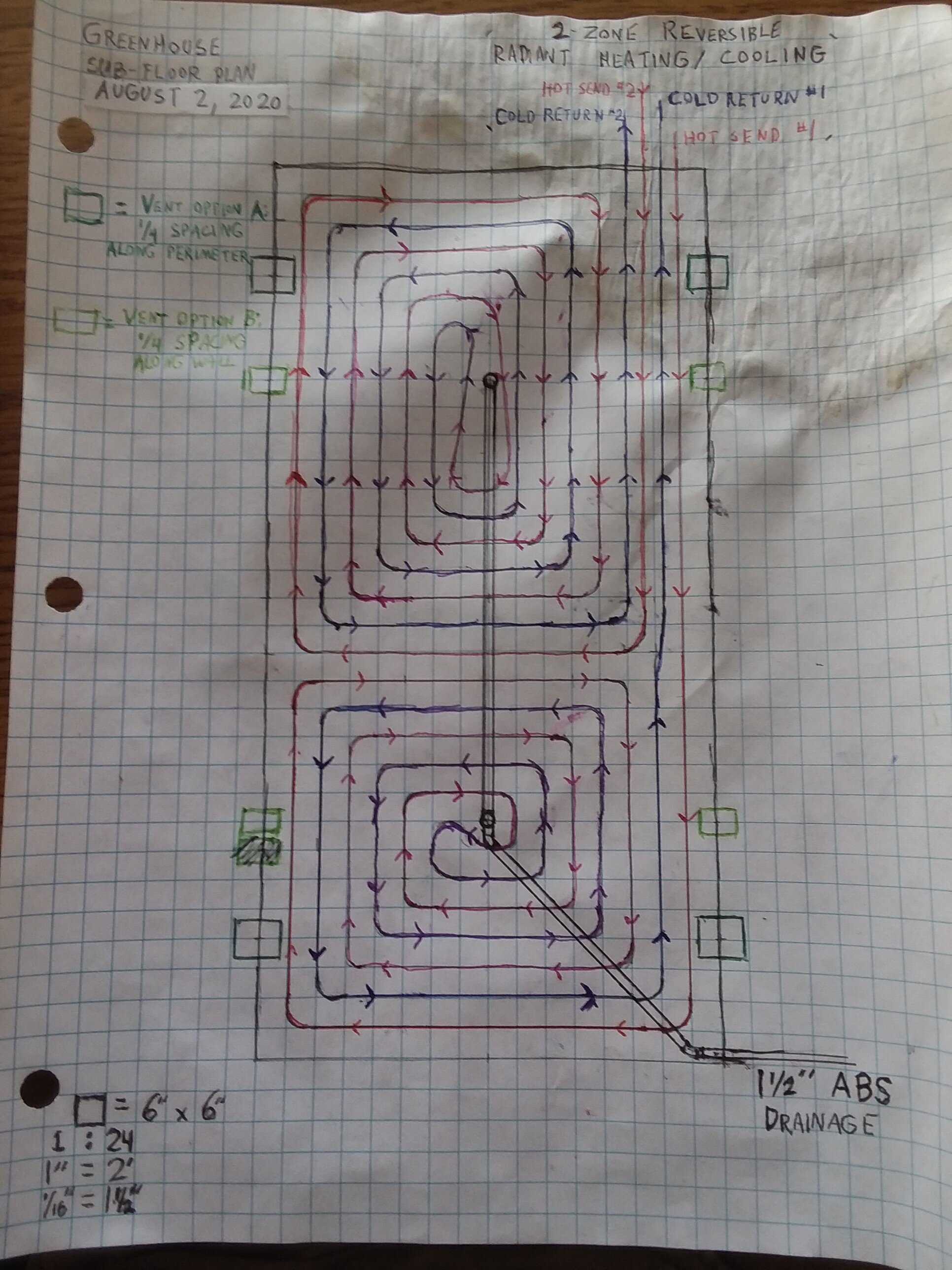In-Floor Heating, Off The Grid
Happy 2021, everyone! Things aren’t going to get magically better this year, but it sure feels good to put 2020 behind us. Let’s all keep working towards the future we want in the coming months.
Today’s exciting news is that we finally finished our in-floor heating project… and it worked! We actually recorded this episode on our property, in the very greenhouse we heated with our own self-designed in-floor heating. We knew from the get-go that electric heating wouldn’t be an option; the average space heater runs on 1500 watts, which means that our giant Yeti 3000 battery could only run one for 2 hours. Another solution was needed.
I knew that it was going to be cold overnight (lows around 33F) during our New Year’s trip up to the property, so I pushed hard for us to finish the heating system. If not now, then when? So… we did it! In-floor heating is now a reality!
We’ve been working on this project for many months… we built our 8x16 greenhouse back in March and buried 2 coils of vinyl tubing in several inches of sand this summer as we finished the floor. This month we finally finished the actual Water Heating part of the system. We were initially thinking of a 2-barrel solution—one barrel in the bottom for hot coals and another barrel nested in the top for the water—but it turned out that metal barrels are expensive and rather difficult to ship. So instead we went with a stainless steel coil (purchased from a home-brewing supplier) to heat the water. And it works! The temp got down to 33F outside but it stayed above 45F inside the greenhouse and got as high as 55F. Woohoo!
The simple version of the system is: a 12-volt circulating pump (which plugs into our Yeti battery) is immersed in a one-gallon steel reservoir, which pumps hot water from the reservoir through 2 tubing runs that wind through the floor. After pumping the hot water through the floor, the cold water returns to a steel coil immersed in hot coals, which heats the water on its way back to the reservoir and the hot water begins its journey once more.
Dry sand is a very good insulator, which is not what we want here… we did some research and apparently if a tube is buried in 2 inches of sand and the water in the tube is 120 degrees, you can only expect 70 degrees of heat at the surface. Wet sand, on the other hand, is a good conductor. Vince was actually thinking of ways to intentionally wet the sand to increase the conductivity, but when we arrived at the property this month, we realized that Mother Nature had already done that work for us. In fact there was mold on our bamboo floor from an excess of moisture in the greenhouse (which is bad), but it meant that our in-floor heating was more effective (which is good). Whew is everything ever complicated.
The in-floor heating helps a lot, but it’s not perfect. It doesn’t take the greenhouse to a normal indoor temperature. And it’s not perfectly sustainable either; it does require us to burn wood, which creates a lot of smoke and carbon pollution. But campfires are such a basic and primitive way of heating oneself (Paleo Heating, anyone?), I have a hard time having a philosophical issue with fire-based heat. We’re only burning dead wood from our own property, which needed removing anyway for wildfire safety, and we use the heat from that wood twice: once to keep us warm around the campfire itself, and then once more as the coals heat the water for our in-floor heating. We’re using every part of the campfire!
We also tried a second method of off-grid heating this trip, which was much simpler than our in-floor system and stunningly effective. It was just… maybe a little… sketchy? We had a 10-pack of Sterno candles on hand, so we did some research at home about whether you can use Sternos for space heating; they’re made from gel alcohol and technically burn “clean,” so we decided to give it a try. And hoo boy, within 10 minutes the temperature in the greenhouse went from 48 to 58. Ten degrees in ten minutes! It was effective as hell. But there was a bit of a smell and it’s a pretty small inclosed space, even with the windows opened, so we started to worry about… you know… asphyxiation? We enjoyed the heat for a few minutes and then we shut it down. Sternos are made for indoor use and the Sterno company claims they don’t create any carbon monoxide, but for all its effectiveness, I can’t in good conscience recommend it. Do your own research and crack some windows, I guess? Proceed cautiously and at your own risk.
By next winter, we hope to have an insulated yurt with a wood stove, but for now it’s very exciting that our DIY in-floor heating works. We probably won’t include in-floor heating in the yurt, but we will certainly incorporate in-floor heating into many future buildings. And it’s also just fun when our crazy DIY projects actually work! It’s a good start to a brand new year. ❤️

